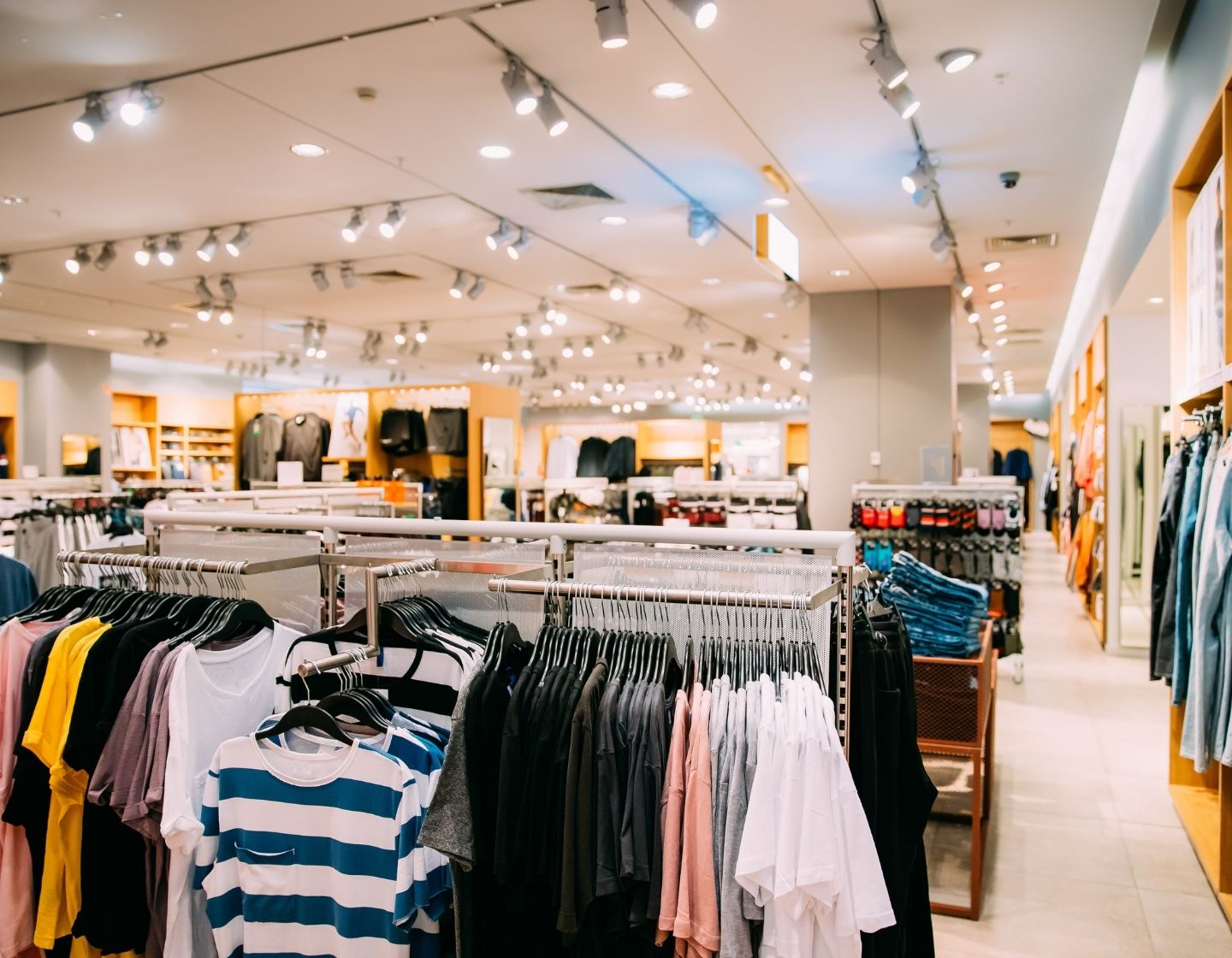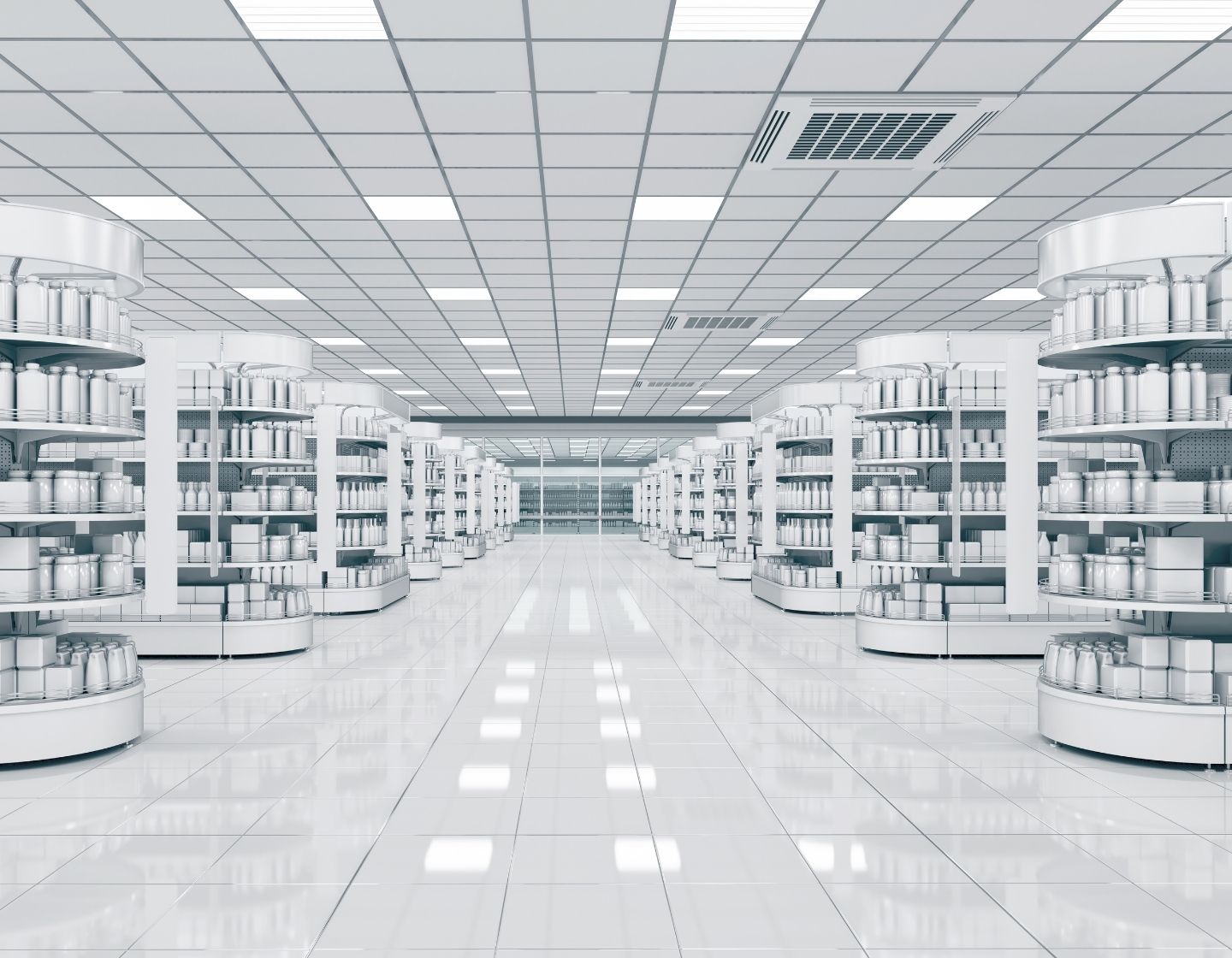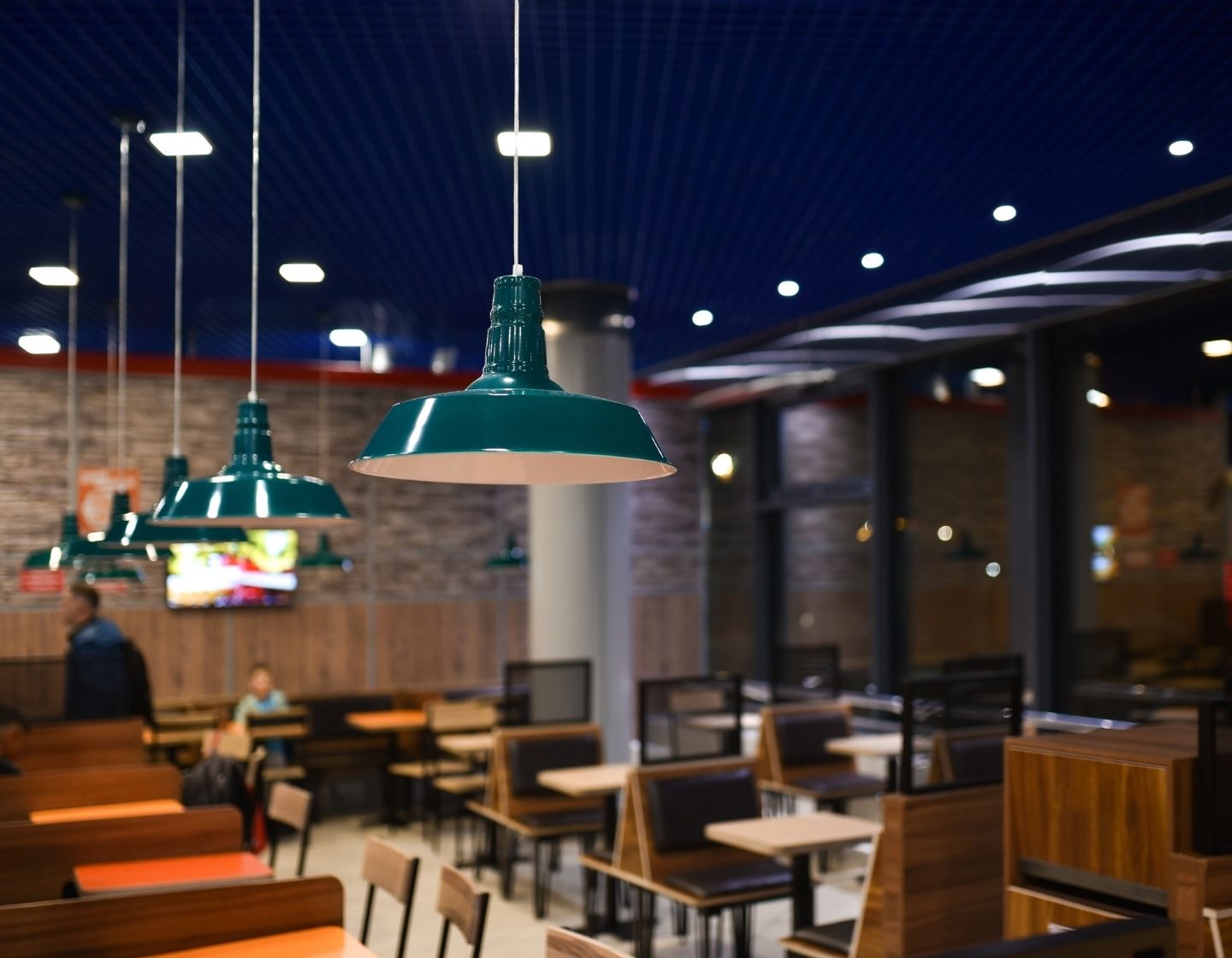How to set up a retail lighting display
The right choices in lighting are a crucial contribution to the success of any retail store, whether that’s multi-level properties or a smaller business.
Well-designed retail lighting combines different types of illumination to achieve optimum experience and results, from drawing customers into the store to providing pathways guiding them to main key product areas, enhancing their interest, setting the mood, highlighting merchandise, and keeping them engaged.
Quality lighting also helps to enhance the reputation of a retail business, and is a key element in brand-building and awareness.
In a small retail setting you would want to cover four kinds of lighting that together form a strong strategy for illuminating the space.
Ambient
The central lighting element for the smaller store will be ambient lighting. It’s the foundation from which to build up the other lighting components in the overall lighting design and it would cover all parts of the store, filling in the gaps around the other specific forms of illumination.
The lighting design would focus first on the focussing fixtures in general before specifying where to place the ambient fixtures that fill in the spaces. The type of ambient lighting could be anything from panels and track fixtures to chandeliers and downlights, and it can be engaging while being understated.
It’s important to ensure that there is even light dispersal so there are no dark spots and unwanted shadowy areas, maximising visibility for the customer, which helps to enhance their confidence in navigating through the store.
This main form of lighting will set the mood for the smaller retail space, whether that’s brisk, clear and clean or ultra-cosy and warm, for example.

Accent
Accent lighting will emphasise specific products and spaces, which gives the customer clear visual signals on their significance and draws them in. There are many ways to achieve the accented effect, from track lights and picture lights, to recessed lights and inner-cabinet lighting. For smaller stores, wall sconces or track lighting would be good choices.
Accent lighting is perfect for highlighting new products and the lighting design will take into account the lines that are most popular, together with special offers and items that are likely to sell faster.
Creating contrast is another key element in store lighting, using different light sources to create a bit of drama by “painting” light and shade around products or areas. This is an excellent method for catching the attention of customers and drawing them in. This form of accent lighting is very useful for window displays.
Task
Task lighting is the form of illumination that focuses on specific points. The lighting design will take into account the varied and repeated activities in the store to determine where to place the task lighting. Most obvious would be the payment areas and the fitting rooms as well as the backroom areas, like office space.
Task lighting would be utilised across a wider area than accent lights and it’s an essential element in any retail lighting design. The aim would be to ensure that any regular repeated activity is made as easy and pleasant as possible.

Decorative
Good lighting design will create a sense of drama and using striking forms of illumination, particularly in shop windows is a pretty essential in grabbing the attention of people walking by the store.
Creative lighting will not only catch the eye but also aim to make people curious enough to walk through the store doors. Well-lit displays give people a very positive impression of the brand along with the most attractive products. Great decorative lighting is the visual magnet for attracting customers, new and old.
Accent lighting highlights points of interest in the window, with creative wall washing in the background combining to ensure high impact from a distance. Vertical lighting creates a positive background for shop windows and entrances.
Decorative lighting can also be used to create and embellish beautiful spaces with the accent on the aesthetics more than the functionality. It could take the form of LED festive lights or ornamental lamps, providing pleasing colours and light shapes.
Specifics of light
The retail store will focus on tone and brightness in any lighting design. CCT indicates the hue and tone of white light from a fixture or bulb and is measured in Kelvins (K). Different temperatures on the Kelvin scale represent different colours: light at 2000K-3500K looks more orange/yellow and is called warm white, between 3500K and 5100K colour changes to natural or neutral white and at 5100K+ a bluish-white “cool white”.
Brightness is indicated by lumens – a measure of the total amount of visible light given off by a source per unit of time – greater the lumens, the greater the brightness. Watts isn’t a reliable indicator of bulb brightness now. With the incandescent lights, it corresponded to the efficiency of the bulb. With LED now the main light technology, lumens is the best measure for determining the brighter and dimmer spaces in the store.
Well manufactured LEDs from trusted brands will provide long working life, superb energy efficiency, great colour range and reasonable cost with rapid payback
It’s also crucial to choose LEDs with high CRI values. CRI indicates how accurately a light source reveals the true colours of objects, people, clothing and so on. The closer CRI is to 100, the better the colour render of what is being illuminated. True colours improve sales potential.

Careful with that lamp
Any effective lighting design needs to hit sweet spot between clarity and harmony, avoiding the temptation to over-light the retail space, with too much brightness, too many individually lit products and too many colours. Lighting controls are essential here, so illumination can be adjusted to change the mood as needed.
It’s also important to avoid glare and directional lights that focus straight onto the faces of customers. Avoid bouncing bright lights off glass and other reflective surfaces, while deploying diffusing covers or lenses where possible.
Talk to Gemma Turner, our lighting specialist, about your shop lighting needs on 07818 256245.
